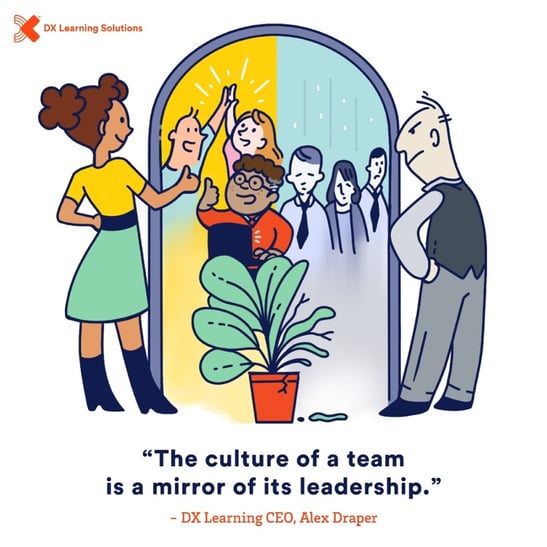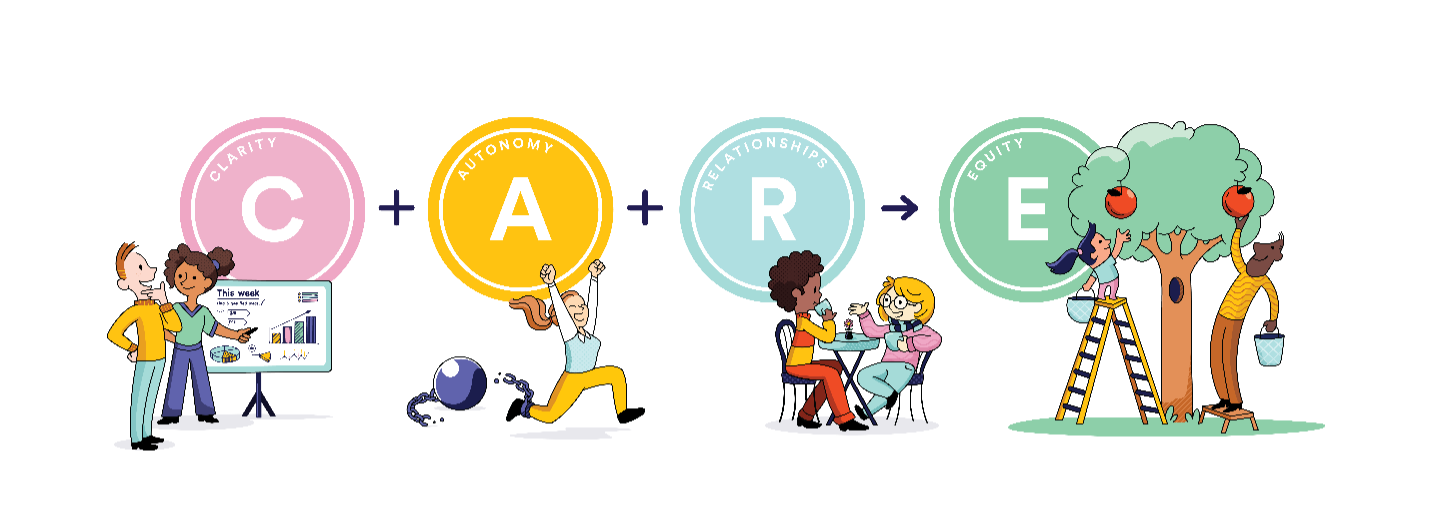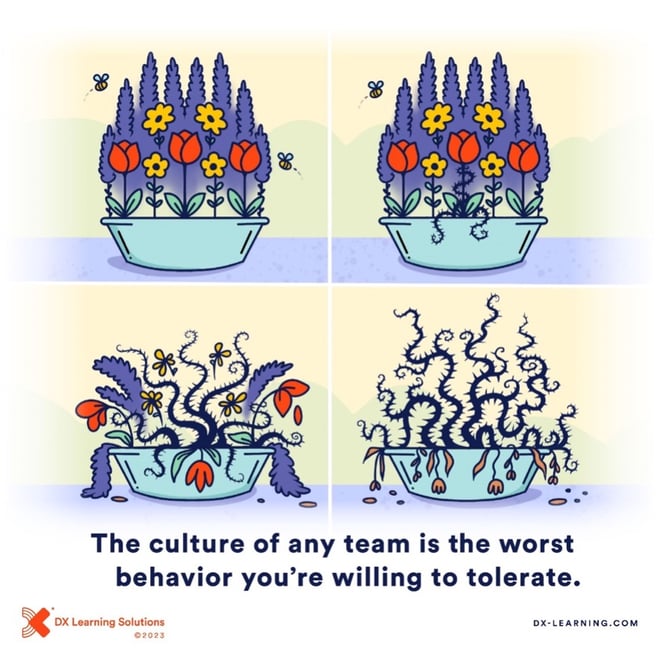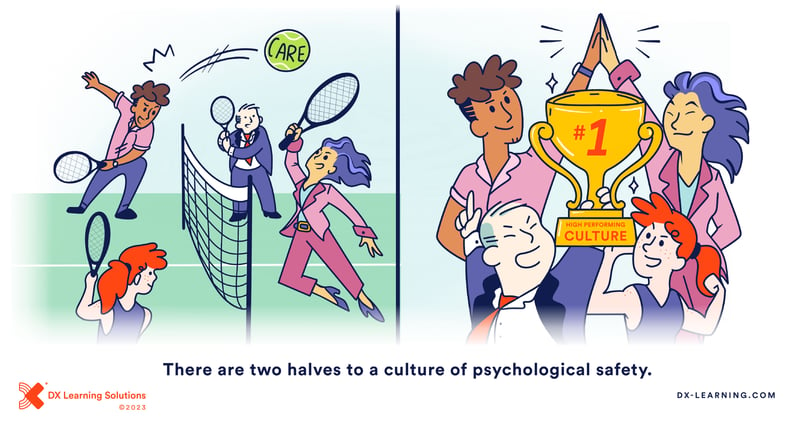Leadership Trends for 2024: What it Means to be Agile

2023 hit managers, especially frontline and middle level managers, hard. They were more likely than non-managers to be disengaged, burnt out and job hunting, and more likely to struggle with work-life balance and feel like their organization doesn’t care about their wellbeing (Gallup). This all inevitably trickles down to teams. Culture is a mirror of leadership after all. So, if your manager is burnt out and disengaged, their team will end up burnt out and disengaged over time too.

Managers account for 70% of the variance in employee engagement (Gallup), and in uncertain times like these, they need to be a port in the storm; someone employees can rely on. But only 23% of US employees fully trust their leaders (Gallup).
The key leadership trends for 2024? It’s no surprise to learn that they’re all about being more human. If our managers become more human, their teams will too.
Leadership is always evolving as the environment is always evolving. Due to the technology revolution, its evolving faster than it has before. There is no one-size-fits-all way to set managers up for success, and the old ways of developing them are already outdated. Faced with new challenges and opportunities, leadership trends in 2024 require managers to be agile, quickly adapting to the needs of their teams and adopting evolving leadership skills to become not just managers, but modern leaders.
Just for clarity. No one was born to lead. Humans have brains. Brains are designed to keep us alive. Effective leadership is about keeping your team alive. Therefore, we need to be developed on how to combat our brains primary protocols. You want engaged teams to build a high performing culture, you need engaged managers who create the environment for their teams to thrive.
Embracing Digital Transformation
Let’s be crystal clear – digital transformation is here to make us more efficient, not replace us. It’s not the T-1000 come to destroy you! There is nothing wrong with the notion of doing more with less. Smart working is better than plain old hard work.
It’s not about becoming a robot, but about how AI can help us all to do better at our human roles. Make us more human, even. The future of leadership involves tapping into digital tools like AI, automation and machine learning, to turbocharge productivity and collaboration. Give us MORE time to be human and do the things that AI cannot. Remember, AI doesn’t CARE. Humans do. Becoming fluent in digital is a key to evolving leadership skills that make you and your team more efficient. By leveraging technology, you can make time your friend, not your enemy, giving you the time to CARE for those you serve. More about that later.
Think less Skynet, more added wind in everyone’s sails.
Prioritizing Emotional Intelligence and Empathy
The young guns entering the workforce aren't asking for the moon; they just want to be treated like humans. Culture is their bread and butter. It’s #1 on their list.
We need to adapt to future leadership trends and that means swapping the tough love act for a more empathetic approach. Ruling with an iron fist? That doesn't fly anymore. Should never have. A leader who inspires fear is not a leader at all.
The future of leadership is about EQ (emotional intelligence); being self-aware, embracing vulnerability while regulating your emotions, and respecting, understanding, and uplifting the diverse voices in your workforce. Leaders who embrace the human skills of the modern workplace – clarity, autonomy, relationships and Equity™ (CARE) – get the hard stuff done.

Leaders trained by The CARE Experience are self-aware; they understand their emotions, strengths, and weaknesses, and can regulate their reactions. They consider both the rational and emotional aspects of decisions, to make choices that connect and resonate positively with their teams. CARE helps them to understand others’ emotions too, fostering positive communication, and building stronger, more trusting teams that do more than what is expected. Imagine that?
Advancing Human-First Culture Efforts
97% of organizations say they’ve made changes that improved DEI, but only 37% of employees agree (Harvard Business Review). We have to re-frame DEI. Isn’t DEI just about building human-centric organizations? DEI is culture, and culture is DEI.
Future leadership trends dictate that leaders must learn from previous mistakes that are making DEI a taboo word – times you said it was important and then let people down and broke their trust. It’s time to earn that trust back. Where did it go wrong? DEI can’t be a band-aid to your no-so-great culture of “results-first”.
No two humans are cut from the same cloth, and there's no such thing as an "average" person. Humans are as unique as fingerprints. Why try to fit everyone into a one-size-fits-all mold?
Stop standardizing DEI. You can’t train everybody with unconscious bias training, then move onto the next box to tick and expect to see miraculous impact.
It’s time for leaders to roll up sleeves and do DEI right – authentically, flexibly, and with a commitment to genuine change. Make it part of the culture. Putting humans first is the secret sauce here. It needs to be seen in behavior every day, especially in the leaders.
DEI is the lagging indicator. So, look at the leading indicators of DEI that will give your organization immediate feedback on DEI efforts. Make those leading indicators the leadership principles, cultural values, and how leaders are rewarded, hired and fired. Make it part of the system. You can only change what you measure, so data is a key driver of DEI success.
Integrating Sustainable and Ethical Leadership Practices
Values are not just writing on a wall; they're your North Star. To keep up with trends in leadership, your values need to scream ‘people first!’, and leadership behaviors must align.
Leaders and teams also need to be held accountable. It’s not like high school, where the jocks and popular kids get a free pass for bad behavior just because someone's a high performer.
In an ethical workplace, everyone is held to the same standards. Toxicity is not tolerated, even by that one high performer. Establishing boundaries for good and bad behavior requires set systems in place to sustain accountability, and continual de-weeding in place from top to bottom.

Focusing on Mental Health and Well-Being
It's not just about getting work done; it's about building relationships, creating a space where people feel safe to speak up about how they're really feeling. And it all starts with leader vulnerability; unmasking, to reveal the human behind the desk.
In the last few rollercoaster years, we didn't just survive; we thrived by coming together during a shared struggle. Seeing each other's messy homes and photobombing pets on video calls gave us a better view of the humanity of our colleagues. It was a lightbulb moment for many leaders: we need that connection in our human experience. We all have baggage. We are all dealing with someone. Imagine a workplace where we could share what we are dealing with, so others can help, understand, and support.

To align to future leadership trends, leaders must maintain this connection by becoming champions of mental health and demonstrating that vulnerability is a strength, your wellbeing matters more than results, to transform the workplace into a safe haven for humans to thrive.
Adopting a Hybrid Workforce Model
Old-school practices won't fit the new way of work. You can’t navigate a new world with an outdated map. Leadership trends for 2024 tell us that leaders have to be intentional, caring architects.
Being intentional means reimagining how teams collaborate, communicate and contribute when boundaries blur. It means intentionally designed spaces that foster connection and collaboration and maintain employee well-being; leveraging tools to track progress and create a shared purpose that makes work fulfilling in the office and at home.
“I don’t trust people not to just watch Netflix,” say the dinosaurs. But how employees are managed has about four times as much influence on employee engagement and wellbeing as their work location. When they are engaged, hybrid workers also demonstrate even higher engagement, better overall wellbeing and lower turnover risk than fully on-site workers who are remote-capable (Gallup).
Cultivating a Culture of Continuous Learning
Be a learn-it all, not a know-it-all! Managers admitting they don’t know the answer to something is not going to make the sky fall. After all, the knowledge and skills that served us well yesterday might not cut it for tomorrow.
To keep up with trends in leadership development, be less focused on being the smartest person in the room – being the most curious and eager to learn person in the room is way more interesting and impressive. And human!
Adopting a mindset that encourages curiosity, embraces new ideas, and values the journey as much as the destination of knowing creates a culture of learning; a safe space where everyone gets a buzz from learning something new every day rather than feeling like an anxious schoolkid praying the teacher doesn’t ask them a question.
Under former Microsoft CEO, Steve Ballmer, Microsoft's returns weren't great – investing $1,000 in 2000 left you with only $702. Then came Satya Nadella, who struck people as an odd choice to shake things up, and who The Wall Street Journal called an “unproven quantity”.
Nadella said, "Many who know me say I am also defined by my curiosity and thirst for learning. I fundamentally believe that if you are not learning new things, you stop doing great and useful things." He prioritized empathy, humility, and learning, shifting Microsoft from a culture where your teammates were competition to a culture where teamwork fostered innovation. One of growth over fixed mindsets. Demonstrating toughness and resilience, he promoted learn-it-alls who shared their mistakes and connected others with a larger purpose.
It helped Microsoft – who had seemingly missed out on the mobile revolution and had become a technology laggard – to make big moves like embracing cloud technology and occupy a transformative leadership position in their industry.
Nadella's approach paid off big time; investing $1,000 on his first day in 2014 would be worth over $10,000 today. His message? Humility, empathy, and insatiable curiosity will carry us into this next age.
Personalizing Leadership Development Paths
The era of cookie-cutter leadership development is over! For leaders to do what we have outlined above, leadership development trends tell us it’s time to flip the script. Embrace individuality and meet the leaders where they are at. Just like any other human, leaders thrive when they feel seen and understood. Make them feel valued for the humans they are. Like anything in life, the more intentional you, the more successful you are.
Every leader is on their own journey, with their own unique style and set of superpowers, quirks and ambitions. Leadership development trends show that a personalized development plan should be like an Incredibles suit – stitched to their unique measurements, and designed to amplify those strengths, not squeeze them into a pre-made mold. Experiences that can be tailored – like our very own EDX leadership simulations – allow each leader to leave with the self-awareness that has an immediate impact on them, the team, and the business.
We can’t just dip our toes into the future of leadership – we need swan dives! Leaders who care inspire their teams to CARE back. High performing teams need high performing leaders who intentionally CARE. High performing leaders need high performing teams who speak up about gaps in CARE so leaders can adjust and improve. That’s the power of psychological safety.

Get in touch to discover how CARE can help your managers, from top to bottom, crush the leadership trends of 2024.
FAQs
Why is emotional intelligence crucial for leaders of the future?
It teaches leaders how to respect, understand, and uplift the diverse voices in their workforce. Leaders who CARE, who are self-aware, and can understand their and others’ emotions, consider both the rational and emotional aspects of decisions, to make choices that resonate positively with their teams. Teams become stronger, better at communicating with each other, and learn to trust each other.
What role does diversity play in modern leadership?
Why would you want a workplace full of clones? Weaving together diverse perspectives and experiences not only enriches decision-making, but also fosters creativity, psychological safety, and a deeper understanding of the diverse world we live in. When leaders champion diversity, they show they CARE. A human-first culture will outlive results-only cultures, as we strive for existence in the American workplace where we are producing less babies, stricter immigration policies, and more people retire than enter the workforce.
How can leaders maintain agility in a changing business environment?
Embrace leadership development training! Master the art of agility and learn the soft skills essential for navigating the modern workplace. It’s a commitment to fostering a sense of belonging for every individual and ensuring that everyone’s experience is a positive one as we move into a new era.
Insights

Subscribe to Our Monthly Newsletter!
For managers and talent professionals who truly believe in putting people first, the CARE to Win blog is your gateway to the latest insights on human-centric leadership. Join us as we champion the people first movement.
Need some time apart? Are we emailing you too often? Just give us your feedback, and we promise we’ll respond. We really do care. And if it’s still too much, just unsubscribe. It’s cool.
.jpg) Alex Draper
Alex Draper



